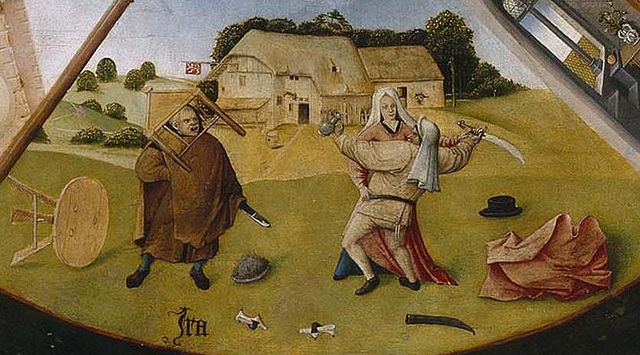
Schüssler 1993
“Das göttliche Sonnenauge über den Sündern – Zur Bedeutung der ‘Mesa de los Pecados Mortales’ des Hieronymus Bosch” (Gosbert Schüssler) 1993
[in: Münchner Jahrbuch der bildenden Kunst, 44 (1993), pp. 119-150]
Schüssler offers an iconological analysis of the Tabletop with the Seven Deadly Sins (Madrid, Prado), which is often attributed to Bosch. In the centre we see the resurrected Christ in the middle of concentric circles which suggest at the same time an eye and a sun. In the fifteenth century, Bosch was not the only one to represent the Godhead as an all-seeing eye or as a sun. According to Schüssler, Bosch saw the Christ here as an example of ‘Patientia’: He notices the sins of all people, but remains patient, although at the same time the viewer is warned of the ‘last things’.
The lecture of the circle with sins should start with ‘Ira’ and then continue to the right. Bosch did not want to represent a turning wheel, it is the viewer himself who has to walk in a circle around the painting. The circle with sins points out that Christ sees all sins at the same time, whereas the sinners pay no attention to Him. Because ‘Ira’ is given a priority position, Schüssler supposes that Bosch was inspired by Ecclesiastes 28, 6: ‘Think of the last things and quit enmity’. In Bosch’s representation of ‘Ira’ the temperaments play a role: ‘Ira’ is linked to the choleric temperament (see the lion in the signboard of the inn).
[explicit January 10, 2018 – Eric De Bruyn]